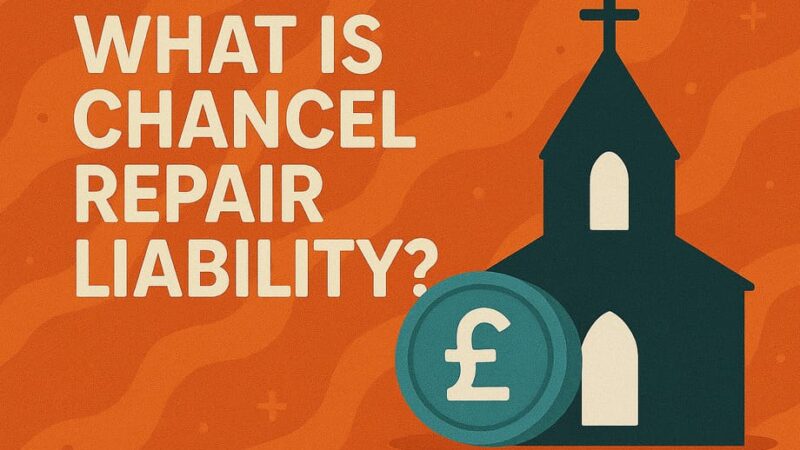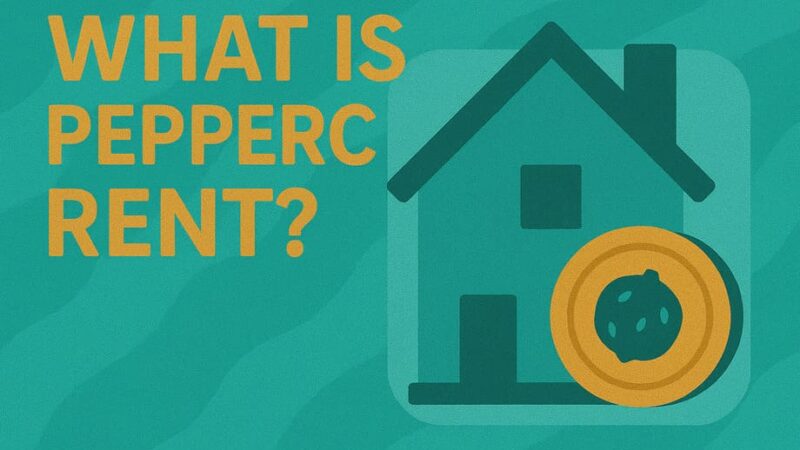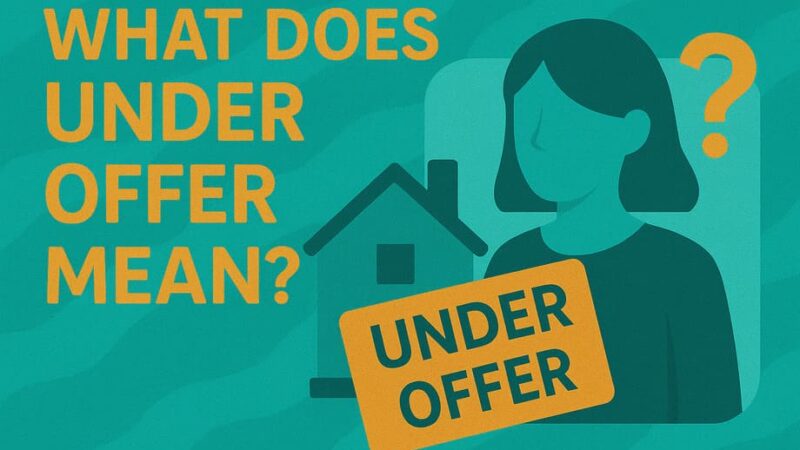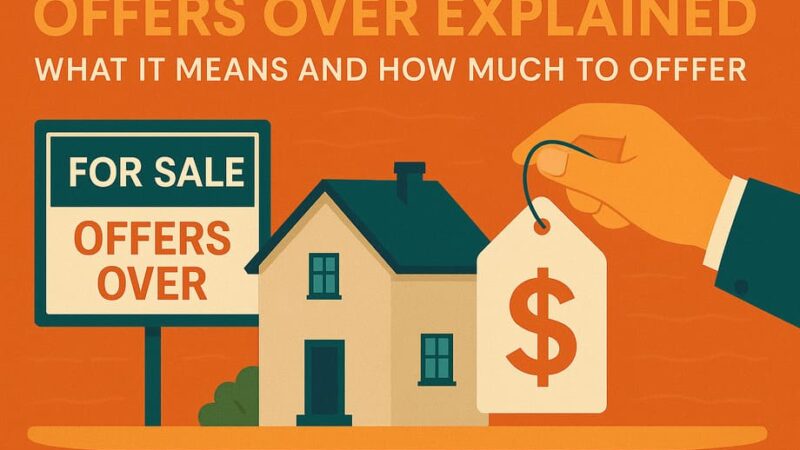How to Add Value To Your Home
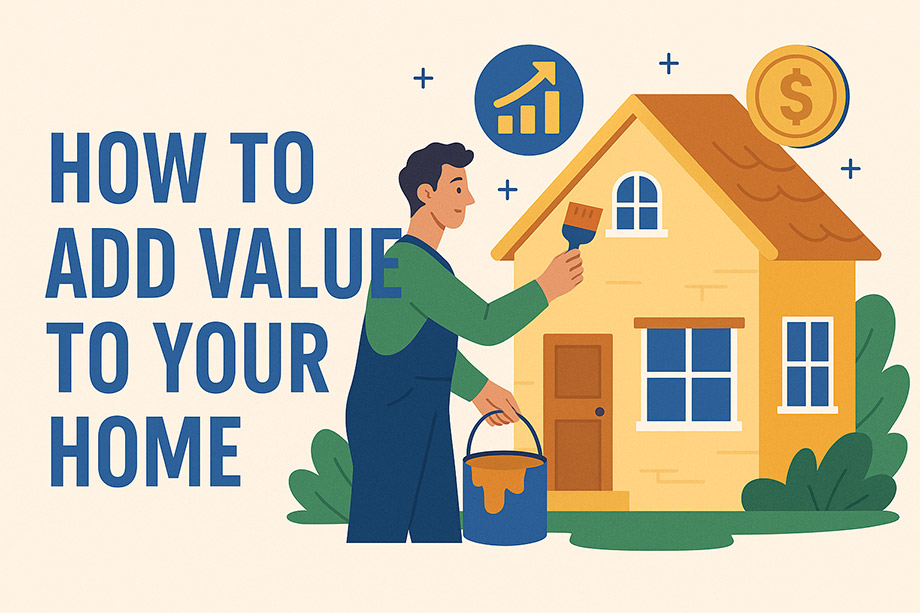
The UK property market in 2025 continues to reward homeowners who make strategic improvements. With average house prices varying significantly across regions, understanding which improvements deliver genuine value versus those that simply increase costs has never been more critical. Our comprehensive analysis of recent transactions and consultation with certified builders, estate agents, and property valuers reveals the improvements that consistently outperform the market.
Current Market Context
Regional Property Values (Q2 2025):
- Detached houses: £465,000 average
- Semi-detached: £295,000 average
- Terraced properties: £251,000 average
- Flats/maisonettes: £252,000 average
These figures represent national averages, but regional variations can be substantial. London properties often see 40-60% higher improvement returns compared to northern regions, while areas with strong transport links to major cities perform above their regional averages.
Market Drivers in 2025:
- Energy efficiency requirements becoming buyer essentials
- Remote working spaces maintaining high demand
- Parking solutions increasingly valuable in urban areas
- Multi-generational living arrangements growing in popularity
Strategic Value-Adding Framework
The Three-Tier Approach
Our research with property professionals reveals that successful value addition follows a three-tier strategy: immediate impact improvements, medium-term strategic projects, and long-term structural enhancements.
Tier 1: Immediate Impact Improvements (Under £5,000)
Return on Investment: 300-1,200%
These improvements deliver disproportionate value compared to their cost and can be completed within 1-2 weeks.
1. External Presentation Refresh Cost: £800-£1,500 | Value increase: £4,000-£8,000
Your property’s exterior creates the first impression before buyers even cross the threshold. Professional external cleaning, front door refinishing, and pathway enhancement can transform perceived value immediately.
Implementation checklist:
- Professional pressure washing of exterior walls and driveways
- Front door restoration: sand, prime, and apply weather-resistant paint in classic colors (navy, forest green, or charcoal)
- Window frame touch-ups and glass cleaning
- Garden border definition and pathway clearing
- House number/name plate replacement with contemporary styling
2. Interior Neutral Transformation Cost: £1,200-£2,500 | Value increase: £5,000-£12,000
Neutral decoration allows buyers to envision their own lifestyle in the space while suggesting recent care and maintenance.
Key focus areas:
- Living areas: Warm whites or soft grays to maximize light reflection
- Bedrooms: Calming neutrals that appeal to both adults and families
- High-traffic areas: Durable finishes that maintain appearance
3. Essential Maintenance Resolution Cost: £500-£1,500 | Value increase: £3,000-£6,000
Addressing visible defects prevents buyers from questioning overall property maintenance standards.
Priority fixes:
- Plumbing: Dripping taps, running toilets, low water pressure issues
- Electrical: Non-functioning fixtures, inadequate lighting in key areas
- Flooring: Squeaky boards, loose tiles, carpet stains
- Sealant renewal: Kitchen and bathroom areas showing wear
Tier 2: Strategic Mid-Range Projects (£5,000-£25,000)
Return on Investment: 150-400%
These projects require professional implementation but deliver substantial value increases within 2-8 weeks.
4. Kitchen Transformation Strategy Cost: £6,000-£18,000 | Value increase: £15,000-£35,000
Modern buyers prioritize kitchen functionality and aesthetics. Strategic updates can achieve premium kitchen appeal without complete replacement costs.
High-impact kitchen improvements:
- Worktop replacement: Quartz or granite surfaces suggest quality throughout
- Cabinet refacing: New doors and hardware on existing frames
- Appliance integration: Built-in appearance creates premium feel
- Lighting enhancement: Under-cabinet LED strips and pendant features
- Storage optimization: Pull-out drawers, corner solutions, pantry organization
Regional performance variations:
- London properties: Average £25,000 value increase
- Southern England: £18,000 average increase
- Northern regions: £12,000 average increase
5. Bathroom Enhancement Program Cost: £4,500-£12,000 | Value increase: £8,000-£20,000
Bathroom improvements consistently rank among the highest ROI projects, particularly when creating additional bathroom facilities.
Downstairs toilet installation: Converting understairs space or small areas into powder rooms addresses a critical buyer need. Cost averaging £2,800 can add £15,000+ to property value.
Main bathroom upgrades:
- Modern suite replacement with water-efficient fixtures
- Tile and grout renewal for hygiene perception
- Storage solutions: Built-in niches, vanity units
- Ventilation improvement: Prevents future moisture issues
- Accessibility features: Growing market demand
6. Energy Efficiency Integration Cost: £8,000-£20,000 | Value increase: £12,000-£40,000
Energy efficiency improvements deliver both immediate buyer appeal and long-term cost savings, increasingly crucial for mortgage approval and buyer decision-making.
Solar panel systems: 4kW systems averaging £12,000 can increase property value by 8-15% depending on regional energy costs and available roof space.
Insulation upgrades: Comprehensive insulation programs (loft, cavity wall, external wall) typically cost £3,000-£8,000 but can increase property value by up to 12% while dramatically improving EPC ratings.
Window replacement: Double or triple glazing installation ranges from £8,000-£15,000 for average homes but can add 7-12% to property value through improved energy efficiency and kerb appeal.
Tier 3: Structural Enhancement Projects (£25,000+)
Return on Investment: 80-200%
Major projects requiring planning consideration and professional design, completed over 8-16 weeks.
7. Open Plan Living Creation Cost: £8,000-£15,000 | Value increase: £25,000-£50,000
Removing non-load-bearing walls to create open plan kitchen-dining-living areas consistently tops value-addition surveys.
Critical considerations:
- Structural engineer consultation for beam calculations
- Building control approval for structural modifications
- Electrical and plumbing repositioning
- Flooring coordination across connected spaces
- Heating system rebalancing
8. Loft Conversion Excellence Cost: £25,000-£60,000 | Value increase: £35,000-£100,000
Loft conversions remain the highest-impact single improvement for most UK properties, particularly effective for creating master suites or home offices.
Conversion types and returns:
- Velux conversion: £25,000-£35,000 cost, 15-18% value increase
- Dormer conversion: £35,000-£50,000 cost, 18-22% value increase
- Hip-to-gable conversion: £45,000-£65,000 cost, 20-25% value increase
Success factors:
- Adequate head height (minimum 2.2m at ridge)
- Natural light maximization through strategic window placement
- Proper insulation for year-round comfort
- Building regulation compliance for safety and resale
9. Garage Conversion Strategy Cost: £12,000-£25,000 | Value increase: £18,000-£45,000
With most UK garages used for storage rather than vehicles, conversion to liveable space offers excellent value potential.
High-value conversion options:
- Home office/study: 12-15% value increase
- Additional bedroom with en-suite: 18-22% value increase
- Kitchen-dining extension: 15-20% value increase
Essential requirements:
- Insulation upgrade to building regulation standards
- Damp-proofing and floor insulation
- Window installation for natural light and ventilation
- Electrical upgrade for modern living requirements
Regional Performance Analysis
Value Addition by Location
Our analysis of recent transactions reveals significant regional variations in improvement returns:
London and South East:
- Premium of 40-60% above national averages
- Parking solutions particularly valuable
- Energy efficiency highly prioritized
- Space optimization crucial due to property constraints
South West and Home Counties:
- Garden improvements perform exceptionally well
- Period feature restoration commands premium
- Rural properties benefit from annexe additions
- Transport connectivity improvements valuable
Midlands and North:
- Cost-effective improvements show strong returns
- Family-focused additions (bathrooms, bedrooms) prioritized
- Energy efficiency improvements crucial for heating costs
- Traditional features restoration valuable in period properties
Professional Implementation Strategy
Choosing Your Project Team
Successful value addition depends critically on professional expertise selection and project management.
Essential Professional Consultations:
Structural Engineer (£800-£1,500 consultation): Required for any wall removal, loft conversion, or load-bearing modifications. Early consultation prevents costly redesigns and ensures building regulation compliance.
Chartered Building Surveyor (£600-£1,200): Pre-project assessment identifies potential issues and optimal improvement strategies. Particularly valuable for period properties or homes with previous modifications.
Local Estate Agent Consultation (Usually free): Provides market-specific advice on which improvements deliver best returns in your immediate area. Different neighborhoods prioritize different features.
Compliance and Regulatory Framework
Planning Permission and Building Regulations
Understanding regulatory requirements prevents future sales complications and ensures maximum value capture.
Planning Permission Requirements:
- Single-storey rear extensions under permitted development (6m detached, 8m terraced)
- Loft conversions typically permitted development unless in conservation areas
- Garage conversions usually permitted development
- Front garden parking may require dropped kerb permissions
Building Regulation Compliance: All structural work, electrical upgrades, and bathroom installations require building control approval. Non-compliance can reduce property value and complicate future sales.
Professional certification benefits:
- FENSA certification for windows and doors
- Gas Safe registration for heating work
- NICEIC certification for electrical work
- Structural engineer certification for load-bearing modifications
Budget-Conscious Value Strategies
Maximum Impact Minimum Investment
For homeowners with limited budgets, strategic improvements can still deliver significant value increases.
Under £2,000 High-Impact Projects:
Door and Handle Upgrade Program: Replacing internal doors, handles, and hardware throughout the property creates immediate modernization impression. Cost: £800-£1,500, Value increase: £3,000-£6,000.
Professional Deep Clean and Stage: Comprehensive cleaning including carpets, windows, and details buyers notice. Cost: £400-£800, Value increase: £2,000-£5,000.
Lighting Enhancement: LED fixture updates and additional task lighting in key areas. Cost: £600-£1,200, Value increase: £2,500-£5,000.
Garden Boundary Definition: Fence repair/replacement and garden structure to define property boundaries clearly. Cost: £1,000-£2,000, Value increase: £3,000-£7,000.
Technology Integration and Future-Proofing
Smart Home Value Addition
Modern buyers increasingly expect integrated technology and sustainable features.
Smart Home Systems (£2,000-£6,000):
- Heating controls (Nest, Hive systems)
- Security integration (cameras, smart locks)
- Lighting automation
- Energy monitoring systems
EV Charging Infrastructure (£800-£2,500): Electric vehicle charging points add significant appeal for forward-thinking buyers and can increase value by 3-7% in suburban areas.
Fiber Optic Connectivity: Ensuring property has latest broadband infrastructure appeals to remote workers and families. Often low-cost upgrade with high buyer appeal.
Common Value-Destruction Mistakes
Improvements That Reduce Appeal
Over-Personalization Risks:
- Highly specific color schemes or themed rooms
- Built-in furniture that limits layout flexibility
- Niche facilities (home gyms, wine cellars) that don’t appeal broadly
Poor Quality Implementation:
- Cheap materials that appear budget rather than value
- DIY work that looks unprofessional
- Incomplete projects that suggest poor planning
Market Mismatch:
- Luxury improvements in budget property areas
- Family-focused additions in young professional neighborhoods
- Traditional features in modern property styles
Investment Recovery Timeline
When to Expect Returns
Immediate value recognition (0-6 months):
- Presentation improvements
- Essential maintenance resolution
- Energy efficiency upgrades
- Kitchen and bathroom updates
Medium-term value realization (6-18 months):
- Extension completions
- Conversion projects
- Major system upgrades
- Planning permission acquisitions
Long-term investment returns (18+ months):
- Structural modifications
- Full property renovations
- Annexe constructions
- Comprehensive energy system installations
Professional Project Management
Implementation Success Factors
Phase 1: Research and Planning (2-4 weeks)
- Multiple estate agent valuations for baseline understanding
- Professional surveys for technical feasibility
- Planning permission research and applications where required
- Contractor selection and quotation comparison
Phase 2: Design and Approval (4-8 weeks)
- Detailed design development with architect/designer
- Building regulation submissions
- Materials selection and ordering
- Project timeline finalization
Phase 3: Implementation (4-16 weeks depending on scope)
- Professional project management coordination
- Quality control checkpoints
- Compliance verification
- Completion certification
Maximizing Your Investment
Strategic Decision Framework
Before committing to any improvement project, evaluate using this framework:
Market Position Analysis:
- What is the ceiling price for your property type in your area?
- Which improvements are most valued by your target buyer demographic?
- How do your planned improvements compare to neighboring properties?
Financial Feasibility Assessment:
- Can you recover 80%+ of improvement costs in increased property value?
- Do you have sufficient budget for professional implementation?
- Will the improvements provide personal enjoyment during ownership?
Implementation Capability:
- Do you have access to qualified, certified professionals?
- Can you obtain necessary permits and approvals?
- Is the timeline compatible with your personal circumstances?
Expert Consultation Strategy
Maximizing Professional Advice Value
Estate Agent Consultation Approach: Invite 3-4 local agents to provide improvement-focused valuations. Ask specifically:
- Which completed improvements in your area have achieved the best returns?
- What buyer feedback suggests about missing features in your property type?
- How do your planned improvements align with current market preferences?
Building Professional Selection:
- Verify Federation of Master Builders membership
- Request recent project references with value outcome data
- Confirm appropriate insurance and certification coverage
- Establish clear project timeline and payment structure
Ongoing Value Monitoring:
- Regular market value assessments during improvement process
- Buyer feedback collection if property marketed during improvements
- Professional completion certification for future sale documentation
Long-Term Value Strategy
Sustainable Property Enhancement
The most successful property improvements consider both immediate value addition and long-term market trends.
Future-Proofing Considerations:
- Aging population requirements (step-free access, ground floor facilities)
- Environmental regulations (EPC rating requirements, carbon reduction)
- Technology integration (smart home capabilities, high-speed connectivity)
- Flexible space usage (adaptable rooms for changing family needs)
Maintenance and Preservation: High-quality improvements require ongoing maintenance to preserve value. Budget 1-2% of improvement cost annually for maintenance to ensure continued value contribution.
Implementation Timeline and Budgeting
Realistic Project Scheduling
Small Projects (Under £5,000):
- Planning: 1-2 weeks
- Implementation: 1-3 weeks
- Total timeline: 2-5 weeks
Medium Projects (£5,000-£25,000):
- Planning and approvals: 4-8 weeks
- Implementation: 4-12 weeks
- Total timeline: 8-20 weeks
Major Projects (£25,000+):
- Planning and approvals: 8-16 weeks
- Implementation: 8-24 weeks
- Total timeline: 16-40 weeks
Budget Management Best Practices:
- Add 20% contingency to all project budgets
- Secure fixed-price quotations where possible
- Verify all regulatory fees and certification costs
- Consider temporary accommodation costs for major projects
Quality Assurance and Certification
Protecting Your Investment
Professional Standards Verification:
- All electrical work by NICEIC certified professionals
- Gas work by Gas Safe registered engineers
- Structural work with appropriate chartered engineer oversight
- Window installations with FENSA certification
Documentation Management: Maintain comprehensive records of all improvements including:
- Planning permissions and building regulation approvals
- Professional certification and warranty documentation
- Before and after photographs for valuation evidence
- Contractor insurance certificates and guarantees
Completion Verification: Independent inspection upon project completion ensures work meets professional standards and building regulations, protecting both current value and future sale potential.
Return on Investment Analysis
Measuring Success
Value Verification Methods:
- Professional valuation 3-6 months post-completion
- Comparative market analysis with similar improved properties
- Energy Performance Certificate rating improvement measurement
- Insurance valuation updates reflecting improvements
Tax Considerations:
- Capital Gains Tax implications for substantial improvements
- Potential business rates impact for significant space additions
- Council tax banding review possibilities
- Professional tax advice for major investment projects
Remember, the most successful property improvements serve dual purposes: enhancing your current living experience while building financial value for the future. The key lies in choosing improvements that align with market demand in your specific area while maintaining the character and proportionality that makes your property unique.
Strategic property improvement in 2025 requires balancing personal preferences with market realities, regulatory compliance with creative vision, and immediate impact with long-term value sustainability. With proper planning, professional implementation, and realistic expectations, your property improvements can deliver both personal satisfaction and substantial financial returns.
Last Updated on August 5, 2025 by James Cartwright


